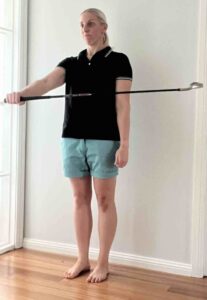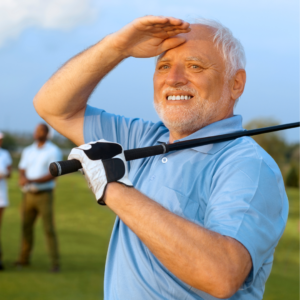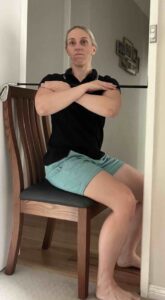Golf is a very popular game with unique physical demands. We have put together our own selection of movement tests that are designed to help you identify any areas that you can work on to improve your comfort and performance in golf.
Seated trunk rotation test
When you look at a golf swing, one of the main body movements that is easy to see is the turning of the trunk. Having good trunk rotation is important to ensure the body works together to produce a powerful and efficient swing. To perform this test, sit in the middle of a doorframe with your club resting across your shoulders, arms crossed over holding the club in place. Keep your knees still and feet in place as you turn your body. You should be able to turn far enough that the club touches the door frame on each side.
Single leg balance
While you don’t necessarily stand on one leg while playing golf, the variations in terrain make balance a requirement to enable good stability for the trunk and upper body to move over. Standing on one leg also requires good hip muscle strength which is an important attribute for golf. Make sure you have balance support nearby before you attempt this test. Start with your feet side by side and then lift one leg in front of the body by bending and raising the knee. You should be able to hold this position for ideally longer than 10 seconds and there should be no more than a few seconds difference between your left and right leg score.
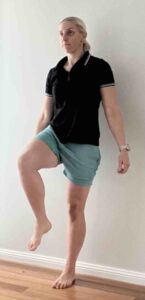
Overhead Y test
Good flexibility of the shoulders is important to ensure that they can move in a way that doesn’t place extra strain or pressure on the rotator cuff muscles. Sitting in a chair against the wall (preferable without a back support or with a minimal width back support), ensure you are as far back in the seat as possible and reach your arms overhead keeping the elbows straight. Ideally, you should be able to reach overhead into a Y position and touch the wall behind you with your elbows, hands and wrists making sure your trunk is vertical and not leaning.
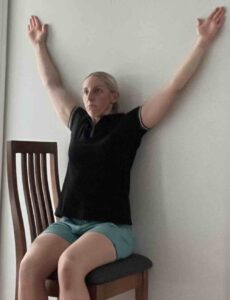
Shoulder rotation test
This test is important for the same reasons listed above, however it tests for a different element of shoulder mobility – its ability to rotate! Stand against a wall, ideally with your buttock, upper back, back of shoulders and neck touching the wall. Keep these touch points against the wall as you bring your arm up into a stop sign position, aiming to have your elbow, wrist and hand touching the wall as well as the back of the shoulder.
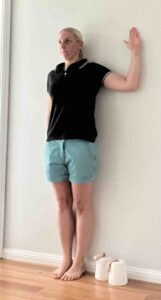
Hip mobility test
Just as the hips need to be strong in a golf swing, they also need to be mobile enough to allow a fluid swing. Stand with your feet underneath your hips and place a golf club in the middle of your feet, running parallel to the position of the foot. Without letting your hips or trunk twist, turn your leg so that your heel stays in place, but your toes move inward to touch the golf club. Make sure you test this on both sides.
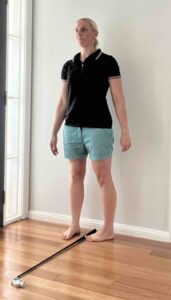
Wrist control and mobility
Of course the wrists also play an important role in guiding the position and acceleration of the club head. Hold an iron in one hand at the end of the grip, moving the club into a position where the club head is towards to left and the shaft is parallel with the ground. Hold this position for 5 seconds. Now rotate the wrist so that that fly head moves in an upward arc to the opposite side, again to a position where the club shaft is parallel with the ground and hold this for 5 seconds.
